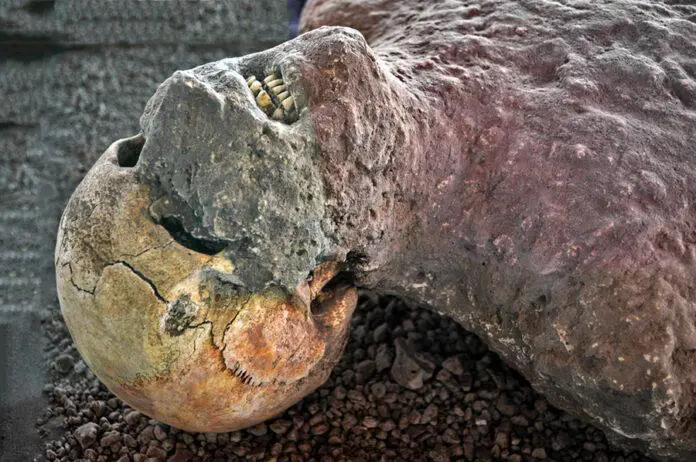In 79 AD, Pompeii, a port city south of Naples, Italy, was devastated and buried by the ashes of Mount Vesuvius’ volcanic eruption. The eruption was so intense, it could be seen from 25 miles away. More than 2,000 lives ended that day, though many somehow were able to escape. The narrative of the event was passed down to us through the writings of Gaius Plinius Caecilius Secundus (better known as Pliny the Younger) a lawyer, author, and magistrate of Ancient Rome.
Several buildings still exist and have been preserved. The architecture of the buildings suggests that Pompeii might have been a holiday getaway for wealthy Romans. The city was also alive with trading and business. It probably had a population of between 6,400 and 20,000 residents. About 1,200 bodies have been found.
A team of archaeologists and geneticists just published their findings in the journal
Scientific Reports (Volume 12, Article number: 6468, 2022). The paper was entitled, “Bioarchaeological and palaeogenomic portrait of two Pompeians that died during the eruption of Vesuvius in 79 AD,” and was authored by Gabriele Scorrano, Serena Viva, Thomaz Pinotti, Pier Francesco Fabbri, Olga Rickards and Fabio Macciardi.
The researchers studied the remains of humans trapped in time in Pompeii and extracted DNA from the bones of a man (accompanied by a woman) buried by the volcanic ash.
The man and woman were discovered in 1933 in what archaeologists have named the Casa del Fabbro, or The Craftsman’s House (also described as the House of the Blacksmith). The man’s skeleton was found encased in hardened volcanic ash and pumice (volcanic rock). He was reclining on a triclinium, a type of couch used in Roman buildings during meals, with his arms under his head and legs stretched out to the floor.
The couple were sitting in what appears to be a dining room, when they are caught by surprise on that fateful day in 79 AD.
The remarkable preservation of their bodies, encased in the hardened ash, and the latest technology of DNA sequencing, allowed the scientists to learn a lot about the man and woman, using a small amount of powder from the man’s bones as a sample.
Author Dr. Gabriele Scorrano, geneticist at the University of Copenhagen, explained, “New sequencing machines can [read] several whole genomes at the same time.”
It is amazing that the DNA is preserved despite the high temperatures of the eruption.
The authors speculate that the volcanic ash and pumice released during the volcanic blast protected the DNA from environmental factors, thereby preserving it.
Dr. Fabio Macciardi, a member of the team, reported that for the first time since the study of the human remains of Pompeii began in the 19th century, the complete DNA genome has been decoded.
Extracted from the bones of the man, the first “Pompeian human genome” was sequenced, giving us an almost complete set of “genetic instructions” encoded in their DNA.
The study of the man’s bones revealed DNA of bacteria that cause tuberculosis. It is possible he had spinal tuberculosis, or Pott’s disease. He could have suffered from back pain and even paraplegia. Bone from the base of his skull revealed his entire genetic code.
The man had similar DNA markers to other people who lived in Italy at the time. Genes were also found that indicated he or his ancestors may have come from Sardinia, an island off of Italy, and Anatolia, the Asian part of Turkey.
The woman in the house was found on the floor with her arms holding onto the edge of the couch. She had a cloth bag with 26 silver coins.
Forensic analysis of the bodies revealed that the male was about 35-40 years-old and about 5 feet 4 inches tall. The female was over 50 and about 5 feet tall.
Researchers were only able to analyze the DNA of the male.
Dr. Serena Viva, funerary archaeologist at the University of Salento, said that every human body in Pompeii was “a treasure.”
“These people are silent witnesses to one of the most well-known historical events in the world,” Dr. Viva said. “To work with them is very emotional and a great privilege for me.”

